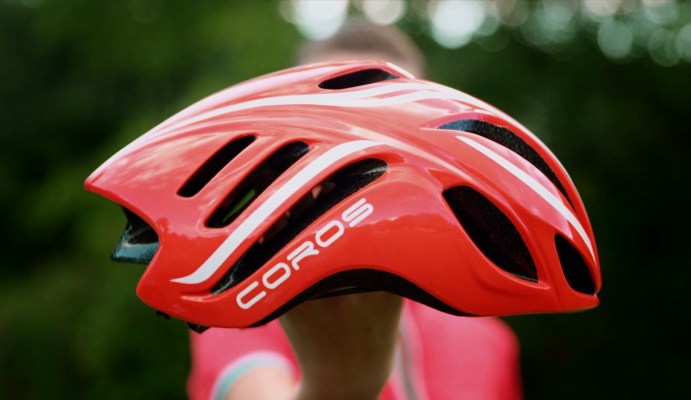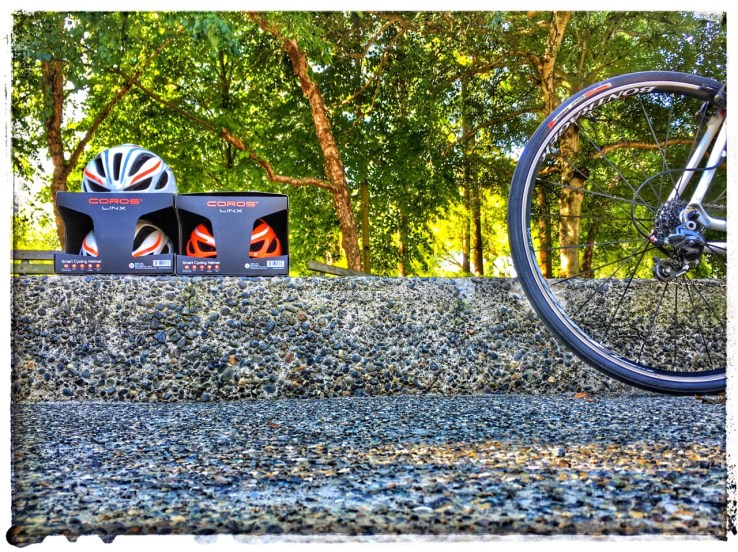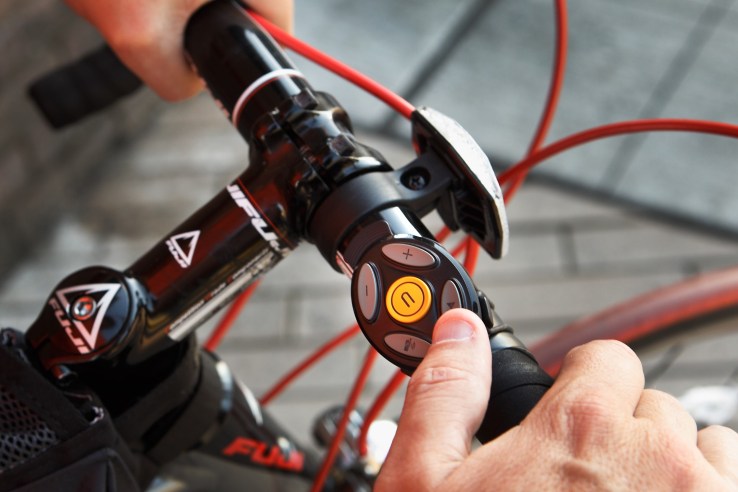While cycling apps are thick on the ground, a full gadget ecosystem is hard to come by. Seattle startup Coros is looking to change that with the LINX, a helmet-app combo (with handlebar controller) that lets you listen to music, take calls, get turn-by turn directions and track progress made along your route. I’ve tried it, and this thing actually seems like a good idea.
Here’s the pitch: The LINX is an ordinary-looking helmet that has two bone-conduction speakers attached to the straps, a microphone up front and a battery and wireless unit built into the back. It pairs with your phone and a control puck that attaches to your handlebars, allowing you to listen to music, take calls, get turn-by-turn instructions or fitness updates and a few other handy features.
Critically, it also leaves your actual ear-holes (or whatever the technical term is) free to hear traffic, squealing tires, pedestrians and all the other noises for which any responsible cyclist should be on the alert.
Coros has been touting its gear in a limited way for a couple of months, but it’s hoping to take things to the next level with a Kickstarter campaign starting tomorrow.
I met up with Coros co-founder Chuck Frizelle to test the gadget (on the beautiful day seen above), then took it for a much longer ride of my own (up to and through an old railway tunnel near Snoqualmie Pass, if you’re curious). See, I wouldn’t be wasting your time with a random Kickstarter unless I knew it actually worked!
The helmet itself is indistinguishable from any other modern helmet; it’s aerodynamic, provides the usual protection, has standard adjustable straps and comes in a variety of colors. The only sign that there’s something weird about it is the pair of nuggets hanging by where the chin straps diverge around the ear.
Those are the bone conduction speakers, and although it takes a bit of fiddling to get them in the sweet spot, they work just fine and won’t bounce around if you’ve got the thing on right; a normal strap would also remain more or less firmly against your temple. I found the helmet as comfortable as any other, and the speakers never squeezed or chafed.
 Of course, the sound isn’t exactly booming. The limits of bone conduction mean you won’t be getting much bass, but beats came through all the same, just attenuated. Mids and upper mids are plenty audible, and the various artists I listened to sounded fine. More importantly, I was also able to hear other cyclists calling out, cars approaching, my own bike operating well (or not) and other auditory cues important to riding safely.
Of course, the sound isn’t exactly booming. The limits of bone conduction mean you won’t be getting much bass, but beats came through all the same, just attenuated. Mids and upper mids are plenty audible, and the various artists I listened to sounded fine. More importantly, I was also able to hear other cyclists calling out, cars approaching, my own bike operating well (or not) and other auditory cues important to riding safely.
In my opinion, this alone is a feature worth having for any cyclist who likes to listen to music or take calls while they ride. Regular in-ear headphones block too much sound, and ordinary Bluetooth bone-conduction headsets are unlikely to be in stereo — and, for that matter, may pop out and get run over. Integrating this function into the helmet feels like the natural evolution of this tech; honestly, I’m surprised it took this long to happen.
The speakers will work just as plain Bluetooth ones, but if you’re cool you’ll load up the app (iOS and Android) and utilize its other functions. The microphone is embedded in the front tip of the helmet, which struck me as insane, but it turns out it works way better than putting it on a strap or something. Calls sounded fine, and voice quality from the microphone (we did a helmet to helmet call) was comparable to other headsets. Based on their tests and my usage, the battery should last for at least a dozen hours (and probably way more) before you have to recharge via USB.
 You can set up routes ahead of time to follow with turn-by-turn directions, set it to alert you every mile or kilometer or once you’ve reached some other checkpoint and there’s an emergency function that texts a contact your location and situation if the app detects a fall. Sharing rides among friends and pros, with ghost-racing functionality, is planned, as well.
You can set up routes ahead of time to follow with turn-by-turn directions, set it to alert you every mile or kilometer or once you’ve reached some other checkpoint and there’s an emergency function that texts a contact your location and situation if the app detects a fall. Sharing rides among friends and pros, with ghost-racing functionality, is planned, as well.
There’s also a walkie-talkie function if you have multiple helmets synced together — handy for groups or teams coordinating. Nice to know a few seconds ahead of time if someone needs to pull over, or if there’s a turn coming up on an unfamiliar route.
All the data (unless it’s paired as an ordinary BT headset) actually routes through the control puck, which you can use to answer calls, skip tracks, adjust volume and so on. There isn’t much to say about the controller — it works, which is about all you need it to do.
Coros didn’t design the LINX from scratch; the company has been working with a major Chinese bike gear supplier to bring the device over here, with all the tweaking, redesigning, testing and app-building that entails. The Kickstarter campaign, which starts tomorrow, is intended to, well, kick-start things and get a good batch of early adopters on board — but the helmet and tech are already built and the features in place, so as far as I can tell there’s no reason to worry about broken promises.
Retail will be about $200, which is definitely on the high end for enthusiast helmets, but the early-bird orders will go for $100. Honestly, for that price, I think the LINX is a steal for anyone who does a lot of serious riding or commutes to work — especially if you tend to take calls. It enables a lot of things without subtracting from safety (although you’ll have to multitask a bit), and a few of them together could make a ride with friends into a safer and more social experience.
[gallery columns="4" ids="1380789,1380786,1380785,1380784,1380782,1380781,1380780,1380779,1380778,1380777" orderby="rand"]


